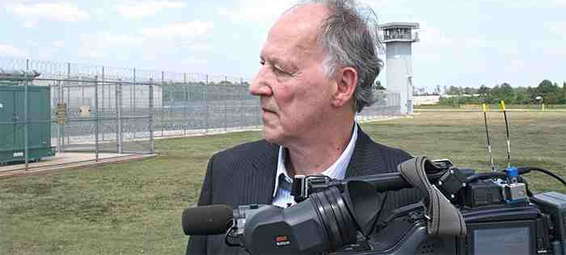German filmmaker Werner Herzog is best known for two things: his unabashedly Teutonic accent, made famous through his dead pan narration of the 2005 film Grizzly Man, and his early career eccentricities. Herzog made a film in which most of the cast was hypnotized; he killed chickens on screen; he pulled a boat over a mountain in the Amazon; he ate his own shoe; and he drove his leading man – Klaus Kinski – insane. In the context of the brash, urgent spirit of the heady days of the New German Cinema, Herzog’s antics were a kind of anarchic revolution – at once sadistic and sublime in their attempts to reclaim the dark corners of the human heart for art’s sake.
Despite the many pub-tales Herzog has generated throughout his career, what made Herzog a great director was that he was able to stay on the bull – harness the madness and shape something poetic with it. Thought his approach can feel obsessive at times, Herzog’s cinematic project was bound up in a notion that more tangential, obscure behavior has something important to tell us about the nature of the human soul. The problem with humanity, Herzog pounds away, is that we limit our understanding of ourselves; we ignore that in our nature confounds our rational sense of self. This makes Herzog’s feel in step with the tradition of German Romanticism.
Of late, Herzog is making documentaries. Six of his last ten films have been non fiction, and this year he released two documentary features and one documentary short. The latest, Into the Abyss, is not as exquisite and sublime a reflection as was his last film, The Cave of Forgotten Dreams, about the ancient paintings found in the Lascaux caves in France. Into the Abyss is about capital punishment, yet like Caves, it is also about looking through time and trying to understand how the filter of time affects our understanding of reality.
The moment in question is a terrible triple homicide committed by a 16-year old kid in Conroe,Texas. For the crime, Michael Perry has received the death penalty, and his accomplice, Jason Burkett, has received life in prison. The movie begins with an interview with Perry, before we know the full extent of his brutal, cold-hearted crimes. In that interview, Perry is skittish, shifty, but affable. Also present is the director, whose face we can see faintly in the glass patrician between the prisoner and the film crew. In the scene, Herzog states his position to Perry plainly: “I don’t have to like you, but I think it isn’t right that the state can kill you.”
The assumption at the start of Into the Abyss is that Herzog is going to break down the moral incongruities that surround capital punishment, as suggested by his thesis statement. Instead, the documentary proves much more scattershot, introducing us to a great variety of characters that obscure as much as they explain the situation. We meet a retired prison guard captain who carried out hundreds of executions only to have his conscious give way under the weight of all that death. We meet the families of the victims and perpetrators. Herzog also deals with a number of processes: the procedure of execution, a recreation of the timeline of the crime, and a recount of the police investigation. Then there are the odd extras, such as a drawling, tobacco-spittingConroe townie who Herzog gives considerable screen time to despite only being an acquaintance of one of the murderers. His stories are entertaining, and they also provide Herzog with that much needed dose of the odd.
All of these tangents and half-elucidated angles make Into The Abyss feel like a collection of notes Herzog took on a swing throughTexas. Not as pronounced in this film are Herzog’s characteristic voiceovers, which, despite being easy to parody, lend philosophic shape to the often abstract subjects of his other documentaries. Herzog makes sure to give time to the more bizarre footnotes of the story, such as a woman who fell in love with one of the imamates after he was incarcerated, married him in prison, and later had his sperm smuggled out of prison so they could have a baby. These sometimes magical anecdotes seem like tangents, but they end up supporting Herzog’s larger project: to show that capital punishment is too arrogant, too simple a solution in the context of a reality so beautifully mysterious.






